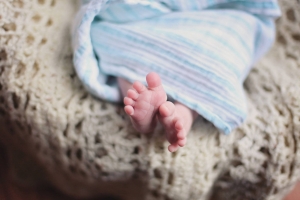Many toddlers experience sensitivity to textures and seams in clothes. Some may react strongly to certain fabrics, while others feel uncomfortable in tight or rough materials. Sensory-friendly clothes help reduce irritation, which makes daily dressing easier and more comfortable.
Children with sensory processing differences, including those with autism or sensory processing disorder, often struggle with traditional outfits. Scratchy fabrics, tight elastics, or bulky seams can make getting dressed a challenge. Soft, breathable, and seamless options allow toddlers to move freely without discomfort.
Parents looking for comfortable and stylish options can explore Trendy Toddler Clothes & Boutique, which offers clothes designed to meet the needs of all toddlers. The right balance between softness, stretch, and durability helps ensure that they feel good in their outfits.
Key Features of Sensory-Friendly Clothing
-
Soft and Breathable Fabrics
Cotton, bamboo, and modal fabrics are soft and breathable. They allow air to circulate and prevent overheating and sweating. Avoiding rough textures is also important. Denim, wool, and synthetic fabrics like polyester can feel scratchy or stiff. Instead, parents should look for tag-free, pre-washed, and ultra-soft materials that provide all-day comfort.
-
Seamless and Tagless Designs
Many children dislike the feeling of inner stitches rubbing against their skin. Seamless clothes eliminate this issue by offering a smooth, irritation-free fit.
Tagless designs prevent itching and scratching. Instead of sewn-in labels, sensory-friendly clothes often feature printed size and care instructions. This small change makes a big difference for children sensitive to texture.
-
Stretchy and Flexible Fit
Clothes that are too tight or stiff can make movement difficult for active toddlers. Sensory-friendly options often include stretchable fabrics that allow free movement. Loose, relaxed fits provide comfort without feeling restrictive.
Elastic waistbands are more comfortable than buttons or zippers. Wide neck openings and slip-on styles also help toddlers dress themselves with ease. These small adjustments improve independence while reducing frustration.
-
Moisture-Wicking and Temperature-Regulating Materials
Temperature-regulating materials adapt to weather conditions and help keep toddlers cool in warm environments and warm in cooler settings. These fabrics reduce the likelihood of overheating or feeling too cold, which can be especially beneficial for children sensitive to temperature shifts.
Lightweight, breathable layers work best for year-round comfort. Parents can choose soft undershirts or thermoregulating sleepwear to ensure their toddler stays at a comfortable temperature throughout the day and night.
How to Choose the Right Clothes
Everyday Wear
Toddlers' daily outfits should allow full movement without discomfort. Soft cotton t-shirts, tag-free leggings, and seamless socks are great everyday choices. For warmer days, lightweight cotton rompers and breathable shorts help keep children cool. In colder weather, layering with soft long-sleeve shirts and fleece-lined joggers provides warmth without irritation.
Sleepwear
Itchy fabrics, tight cuffs, or restrictive designs can make it harder for toddlers to relax. Sensory-friendly sleepwear features loose fits, flat seams, and ultra-soft materials.
Footed pajamas made from cotton or bamboo blends provide warmth without extra bulk. If a child dislikes covered feet, two-piece pajama sets with stretchy waistbands are a great alternative. Tag-free designs ensure that nothing disrupts sleep.
Special Occasion Clothing
Many formal outfits use stiff materials, which may bother sensitive toddlers. Soft cotton dresses, seamless button-up shirts, and elastic-waist pants offer a stylish yet comfortable solution. Avoiding lace, tulle, or heavy embroidery can help prevent irritation. If layering is needed, soft undershirts or breathable leggings can provide a protective barrier against scratchy fabrics.
Why Sensory-Friendly Clothing Matters
- It reduces daily dressing struggles: Getting a toddler dressed can be a challenge, especially when clothes feel uncomfortable. Sensory-friendly designs help minimize tantrums and resistance by making the dressing process more enjoyable.
- It supports independent dressing: Encouraging toddlers to dress themselves is an important step in their development. Clothes with wide neck openings, stretchable materials, and simple fastenings make self-dressing easier.
- It promotes better focus and comfort: Uncomfortable outfits can be distracting for toddlers and affect their mood and ability to focus. When they play, learn, or socialize, what they wear plays a role in their overall comfort and engagement.
Additional Tips for Parents

Test Fabrics Before Buying
Feel the fabric before purchasing to determine if it is suitable for a sensory-sensitive toddler. Running a hand over the material and checking for roughness or stiffness can prevent uncomfortable surprises.
Wash New Clothes Before Use
Some fabrics feel softer after a few washes. Washing new clothes with gentle, fragrance-free detergent helps remove any chemicals or stiffness and makes them more comfortable to wear.
Allow Toddlers to Choose
Giving children some choice helps them feel more comfortable and in control. Letting them select between two sensory-friendly options makes dressing time easier while ensuring they feel good in their outfits.
To Review
Finding the right clothing for a toddler with sensory sensitivities is about comfort, softness, and flexibility. Breathable fabrics, seamless designs, and tag-free styles make daily dressing easier. When toddlers feel good in what they wear, they can focus on exploring, playing, and enjoying their day without unnecessary and uncomfortable distractions.






